These woodblock illustrations of falcon
training come from a mid-1860s
training come from a mid-1860s
album called 'Ehon Taka Kagami'
(~The Illustrated Mirror of Falconry)
(~The Illustrated Mirror of Falconry)
"Kawanabe Kyôsai (Gyôsai) (1831-89) was a Kano painter, printmaker, and illustrator, the son of a Samurai. At the age of six he entered the studio of Utagawa Kuniyoshi^, and from the age of nine became a student of the academic Kano school, studying under Maemura Towa and then Tohaku Chinshin, who gave him the name "Toiku". He exhibited at the Vienna International Exposition in 1873, and at the first and second Paris Japanese Art Exhibitions of 1883 and 1884. In the early years of the Meiji period (1868-1912) he attained considerable popularity with his political caricatures, for which he was arrested and imprisoned in 1870. His famous 'Kyosai Gadan' (1887), an attempt to show a variety of traditional Japanese and Chinese painting styles, was widely appreciated in Europe, and was issued with English captions for the export market.
Kyosai's 'Ehon Taka Kagami' is the major resource on Japanese falconry, with wonderful woodcuts of hawks, field work, breeding, hoods, gloves, and other associated tools and items of equipment. It records the ancient Japanese methods of care, raising, and training of the Siberian Goshawk, considered the best variety for use in falconry since ancient times. Harting 371. Schwerdt III p. 245; see G. Schack. Kyosais Falkenjagd." [source]
"A major resource on Japanese falconry, the capture, taming & teaching of falcons, the grooming, feeding and culture of the bird of prey. Wonderful illustrations of falcons, the associated tools & equipment, stands, methods of warming in winter before the hunt, winter hunting, respect for. On the flushing to expose game birds to be hunted by the falcon, the kill, capture of the quarry. How to tether, hoods, master's gloves and other accoutrements, field work, breeding, bathing &c." [source: removed ebay auction listing]
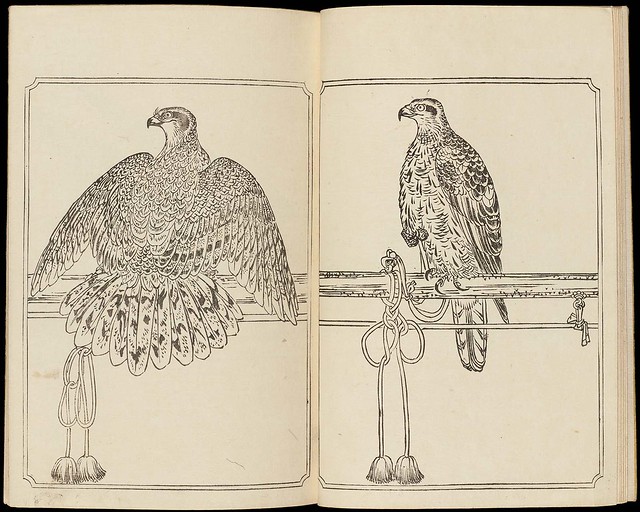
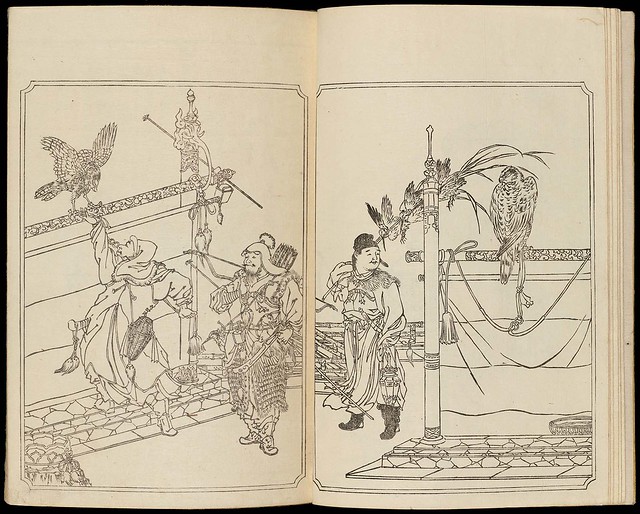

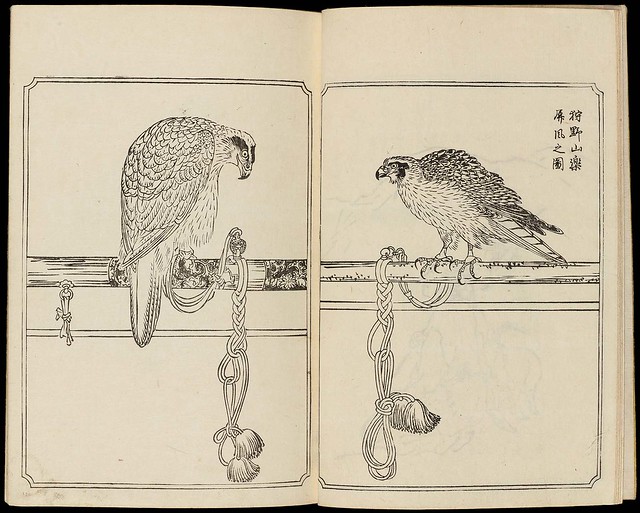
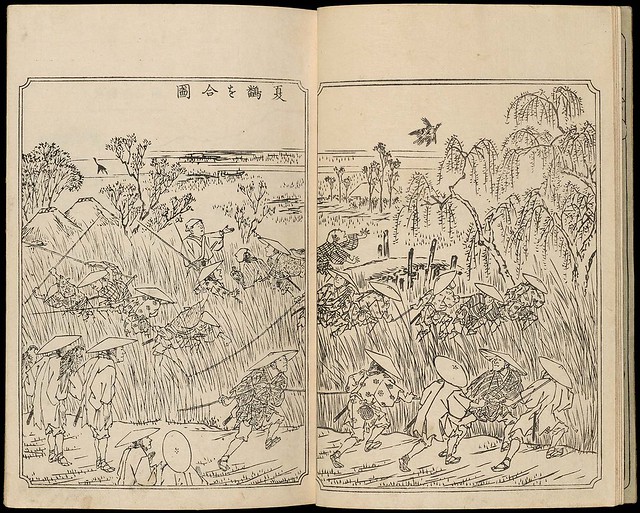
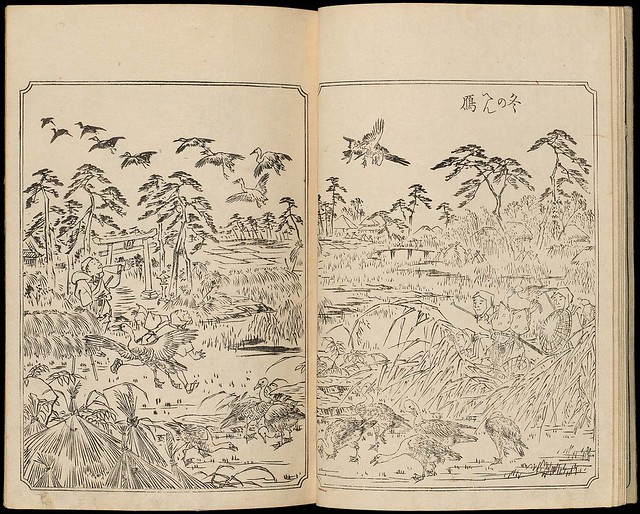


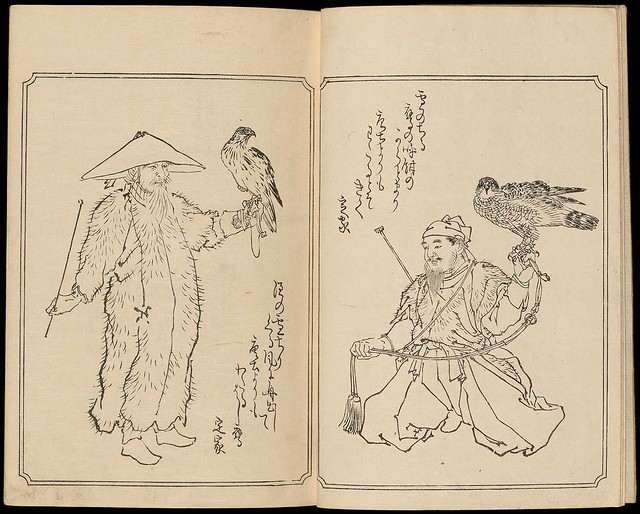
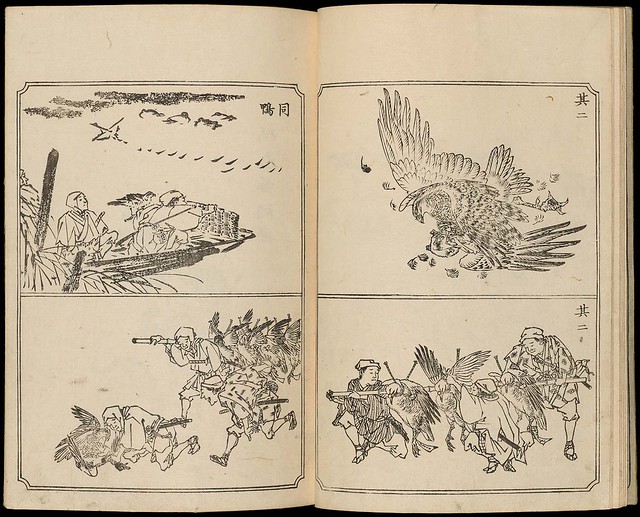
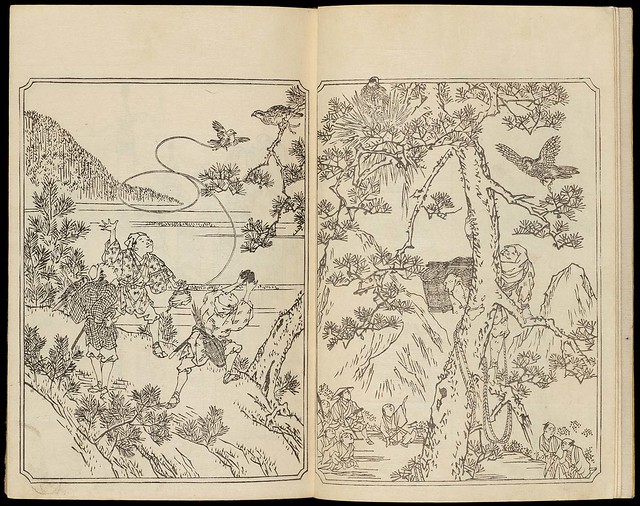
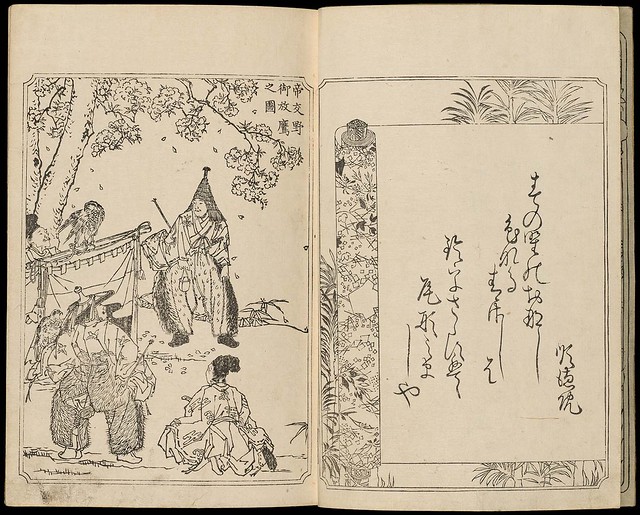
"This magnificent work was issued once in a single first and only edition, and is complete in five volumes. The first series: 3 vols. were published in 1877, followed by the second series consisting of 2 volumes in 1879. [..]
This marvelous work uses crushed mica as an integral part of the hand-made Washi paper. These tiny flecks of mica give a sparkle to the illustrations, and are especially effective on the feather portion of the falcons. Mica gives a realistic and "high-tech" touch to the wood-cut printing technique. [..] The collation of the set is: vol. 1,3,4,5, each have 10p.; vol. 2 has 11p. Every page is nicely illustrated, it contains some 111 illustrations in all. [..]
This work is the most comprehensive single monograph devoted to Japanese falconry ever published in the 19th century or in prior periods. Gyôsai's superb artistic skill and solid ability to capture the essence and feel of real and live Japanese falconry has yet to be surpassed in woodcut media. The application of mica dust is now a lost art, and never done. The work outlines the ancient methods and culture of the falcon. This work records the last of the ancient falconry methods of care, raising and training, again a lost art in Japan." [source]
- 'Ehon Taka Kagami' can be viewed at the Museum of Fine Arts, Boston.
- 'Falconry Illustrated' is a section of a Harvard University exhibition showing some Japanese falconry illustrations from before 1800.
- Previously on BibliOdyssey: Falconry (very much worth seeing!). Also: Le Fauconnier.
- Belated thanks to John Pittman = @dryhypercube.
- Tangential at best: raptors versus drones - *A New Golden Age of Falconry*.
No comments:
Post a Comment
Comments are all moderated so don't waste your time spamming: they will never show up.
If you include ANY links that aren't pertinent to the blog post or discussion they will be deleted and a rash will break out in your underwear.
Also: please play the ball and not the person.
Note: only a member of this blog may post a comment.